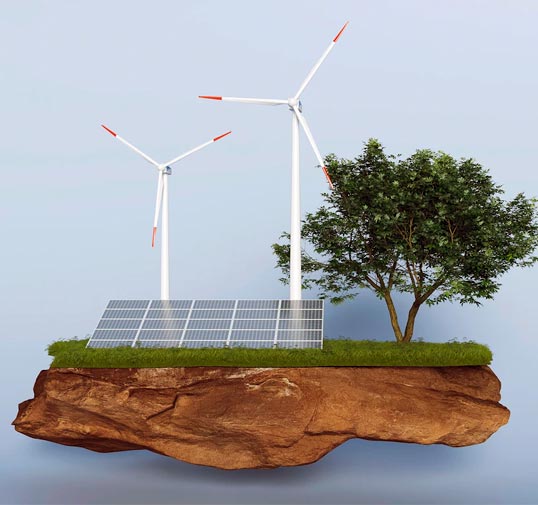
Green Energy
Global demand for electricity is ever-increasing. Global energy markets are changing. As the expansion of renewables continues to grow, they are taking advantage of shift and prosumer technologies.
Also, as 24/7 electricity availability becomes more important, improving grid reliability is a key challenge and strategic plan for many electric utilities. For energy consumers, households and businesses, this is one way to achieve greater efficiency, flexibility, reliability and resilience.
Through a variety of architectural and consulting services, Varunika connects demand with supply, providing end-to-end solutions (from design, construction, operation to maintenance) to support a sustainable future for power grids.


Why India for Green Energy Services?
Strong demand: As India's economy grows, it will reach 15,280 TWh by 2040.
Increased investment: With the ambitions of the Indian government, the region has become very attractive to foreign and Indian investors. In the next four years, it will attract about up to USD 80 billion (Euros 70 billion) of investment.
Competitive advantage: India has year-round sunshine and large hydropower.
Different Renewable Energy Sources (RES):
1. Solar Energy:
Solar energy is clean energy because it does not produce solid, liquid or gaseous waste and does not cause pollution. Solar energy can be generated using photovoltaic cells, which are semiconductors classified into parabolic troughs, parabolic towers, parabolic disc systems, etc. With 300 days of clear sunlight, India gets about 5000 trillion KWh/year, which is more than the country’s total energy consumption. The average solar energy on Earth is 1016 W, and the global energy demand for the needs of all civilizations is 1013 W. So the sun gives us 1000 times more energy than we need.
Among other major projects proposed by the Government of India, an area of 35,000 km2 (14,000 sq mi) in the Thar Desert has been earmarked for solar projects ranging from 700 to 2,100 GW. India also has the world’s first and only solar airport in Cochin, Kerala. India also has a 100% solar powered railway station in Guwahati, Assam.
2. Small Hydropower (SHP):
India is the seventh largest producer of hydropower in the world. Hydroelectric projects in India of less than 25 MW are classified as “small hydro” and are considered “renewable energy”.
3. Wind Power:
Wind power is the most promising alternative energy technology in the future. Over the years, the power of wind turbines has increased dramatically due to recent advances in turbine technology. Although the country is relatively new to the wind industry compared to Denmark or the United States, domestic political support for wind power has made India the fourth largest country with installed wind power.
4. Bioenergy:
Biomass is a renewable energy source derived from carbon dioxide from human and natural processes. Bioenergy includes biomass energy, cogeneration, waste to energy, biomass gasifier, bioethanol, biodiesel, etc. Biomass removes carbon from the atmosphere when it grows and returns it when it burns. With its tropical climate, sunshine and rainfall, India is ideal for biomass production. India’s biomass energy potential is estimated at 16,000 MW of biomass power, with another 3,500 MW from bagasse cogeneration.
5. Hybrid Energy:
With the widespread adoption of renewable energy, the variability of solar and wind generation has emerged as a concern, especially as it makes up a large portion of the energy mix. Hybridization of wind and solar plants creates a solution that minimises this variability due to the holistic nature of the generation profile – higher solar output during the day and higher wind output at night.
Hybrid designs can also use a higher capacity, which eliminates the problem of charging. These features also have the added benefit of reducing the costs associated with shared transmission lines. Peak balancing from gas production to hydro, demand management, smart grid, electric vehicles and storage solutions including batteries, pumped hydro, etc. expect further smoothing of variability resulting from the nature of renewable energy supply.
Connect with Us to Discuss Your Requirements in Green Energy Sector:
Future Prospects of Renewable Energy in India:
With the right investment in green technology, we can say that India is well positioned to achieve its renewable energy goals. Clean energy efforts will play an important role in supporting the nation’s transition to a comprehensive energy system.
It is no secret that India is the fourth largest emitter of carbon dioxide in the world with a population of 1.3 billion and the energy sector is the biggest spender. However, in recent years, India has moved to develop renewable energy sources. The global climate change crisis has forced governments to develop comprehensive plans for clean and sustainable energy for all.




